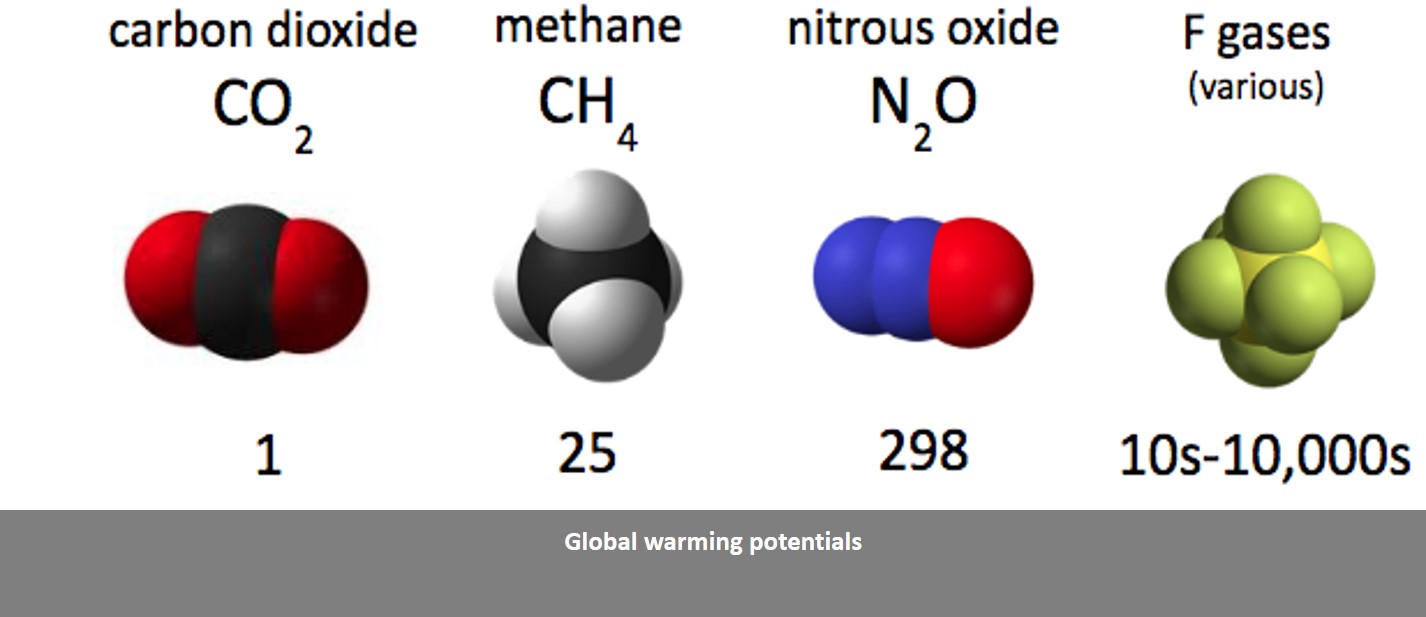GREENHOUSE GASES
We create the problems through the activities that we do. The gases we emit go into the atmosphere and cause global warming, as the following short video illustrates:
Carbon Dioxide is not the only problem gas. These are all the culprits.

They all have different effects. Thus Methane causes 25 times more warming than CO2, converts into carbon dioxide in the atmosphere, and continues like this.
Methane also lasts about a decade on average in the atmosphere, which is much less time than CO2. But methane also absorbs much more energy than CO2. Note here that CO2, CH4, and N2O are natural, whereas F gases are human-made.
THE PROCESS
The process by which these gases get into the atmosphere can be complex and can occur over a long supply chain. For instance, if we eat an eight-ounce steak, which has come from a beef raised in Brazil, then we first need to consider the farm, where the beef is reared. There could be a forest cut down to make way for the farm, reducing the number of trees available to absorb CO2. Then beef emits methane as part of its digestion activities, which we can see is very bad for the planet. Then the beef will be shipped to the UK, where the ship will emit diesel. It will also be transported from the port to the supermarket and into a fridge, which could cause the emission of F-gases (Fluorocarbons). Nitrous Oxide can also be emitted as a result of the fertilisers used in the production of grass to feed the beef.
We measure all these emissions in terms of CO2 equivalent and can add them up over the whole supply chain. This figure is called the “Carbon footprint” of the item. Fortunately, we have scientists who have worked on calculating these carbon footprints. There is a great book by Mike Berners–Lee:- “How bad are Bananas?”, which helps us understand what makes up our own carbon footprint, which is the sum of all the emissions we create.
He says of an 8-oz steak that a raw steak from deforested land in Brazil creates 17.8 kg of CO2e (Carbon Dioxide equivalent). But a steak sourced from the UK causes only 5.8 kg CO2e. The principle of eating locally produced food is a good one. Strawberries are another excellent example. A 250 g punnet grown in the UK causes emissions of 0.49 kg of CO2 e. But a punnet of 250 g strawberries grown in South Africa and shipped by air generates 3.65 kilograms.
So we must be very careful with the source of what we buy and eat!